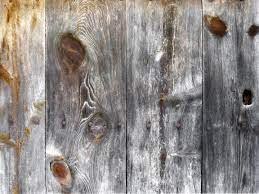People unfamiliar with intensive DIY home improvement projects may think purely of scaffolding when they hear “scaffold board”. In actuality, though, scaffold boards can be used for many things aside from just allowing you a safe access platform. Furniture, fences, decking – a bit of creativity opens the path to many impressive inventions.
However, wood is actually highly vulnerable to the element. In the wild, wood is protected by its thick bark, but scaffold boards erected outside will have been stripped of this, and are forced to face the elements without their natural protection. Not only that, but they have to contend, also, with potential insect infestations that can strip them of all their integrity.
A lot of people may think that by buying waterproof, treated scaffold boards, they can avoid these dangers. But this isn’t true, treatment is not something that is done once and forgotten about. It’s something to be maintained over a number of years.
In this article, we will be exploring how to treat, waterproof and renew both enhancements to wooden scaffold boards, and finish with a solution that doesn’t require you to at all.
What type of faults can wooden scaffold boards receive?
Before you get on with treating scaffold boards, you should check to see if it’s not already decaying or breaking down. All professional scaffold companies adhere, by law, to the BS 2482:2009 standards of scaffold board safety and detail the steps they should take to determine whether or not the board is usable. These are the following signs of instability:
Wet Rot
Wet rot is a type of fungal infection that occurs in environments where the moisture is high. Affected areas of the board will appear discoloured and darker than the majority of the wood. The rot essentially weakens the overall integrity of the board, thereby reducing the load in which it can hold.
This commonly affects boards that are not stored in the correct conditions. Boards should be covered, off the ground and separated by spacers to allow airflow.
Wood Warp
Wood, when exposed to rising and falling temperatures, tends to warp into uneven shapes. This can even happen to the floorboards in your house. This often results in shifts of balance that are quite dangerous if being used at a height.
Damaged Sections
This is fairly self-explanatory. If the board takes structural damage done through improper handling (such as broken knots, end bands etc), then it’s weaker, and shouldn’t be used.
Infestation
Some insects thrive off of eating or simply living inside of wood. Check the board for wormholes, and if you find any, simply get rid of the board.
How to treat wooden scaffold board
You can treat wooden boards, as well as wood of any kind, through several different methods. It’s highly recommended that you apply an anti-fungal wash to clear any existing infestations in the wood before you apply your chosen method, however. This is because your protective coat only protects against incoming threats, rather than ones that already exist within your board.
The following are the previously mentioned methods:
Linseed Oil
To apply it is simple. First, clean the surface of your scaffold board, and then apply the oil evenly across the surface to create a coating. Then allow your oil to soak for a while, then apply a second coat.
For the best results, you should recoat your board with oil every few months. After that, the effects begin to diminish.
Linseed isn’t the only oil used for treatment, however. Aside from Linseed Oil, both walnut and tung oil are often used for this purpose, and sometimes they are mixed with turpentine and apple cider vinegar for a stronger effect.
Sealants
Sealing wood is the best method for treating scaffold boards, as well as adding protection against scratches and warping.
On top of cleaning the board before applying the sealant, you also have to sand it, creating an even surface.
Stir your sealant before applying it with a soft brush over the entire surface of the wood. Then, let the wood dry, give it a light sand, and reapply. Continue until satisfied.
Wood Stain and Dye
Staining scaffold boards has two main benefits: they make the boards look good and increase resistances against infestations and water damage. Stained scaffold boards are best used for outdoor furniture, like scaffold board planters.
The natural grain will be enhanced by the treatment, and resistance against cracking, blistering and peeling will be increased.
Surely there’s a better way?
Treated scaffold boards are great aside from the constant recoating and heavy amount of labour required. On top of that, the more oil/varnish/sealants you buy, the more you spend over time.
When it comes to needing boards for scaffolding, though, BPS has the perfect solution for you – metal boards.
BPS’s staging boards provide a large, expansive workbase that is completely immune to both pests and weather conditions. They come in a range of sizes: 450-600mm width and between 3.05M – 5.95M length. Made of aluminium, it weighs very little in comparison to other boards and can be moved at will, and has the highest weight rating in the market of 270kg. On top of that, you can buy the exclusive handrail addon that connects together easily and intuitively.
We hope this article has helped you understand board treatment and the dangers associated with neglect, plus also given you an alternative option if all that maintenance seems just a little too much.
No related posts.



